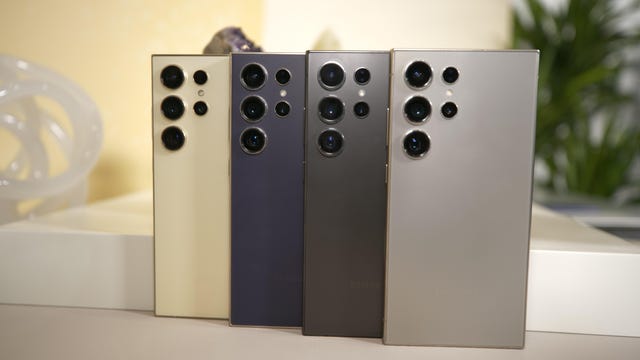Technologies
Galaxy S24 Ultra: What’s Changed From the S23 Ultra (and Should You Upgrade)
Here’s what’s new in the Samsung S24 Ultra and whether it’s worth swapping out last year’s premium S23.
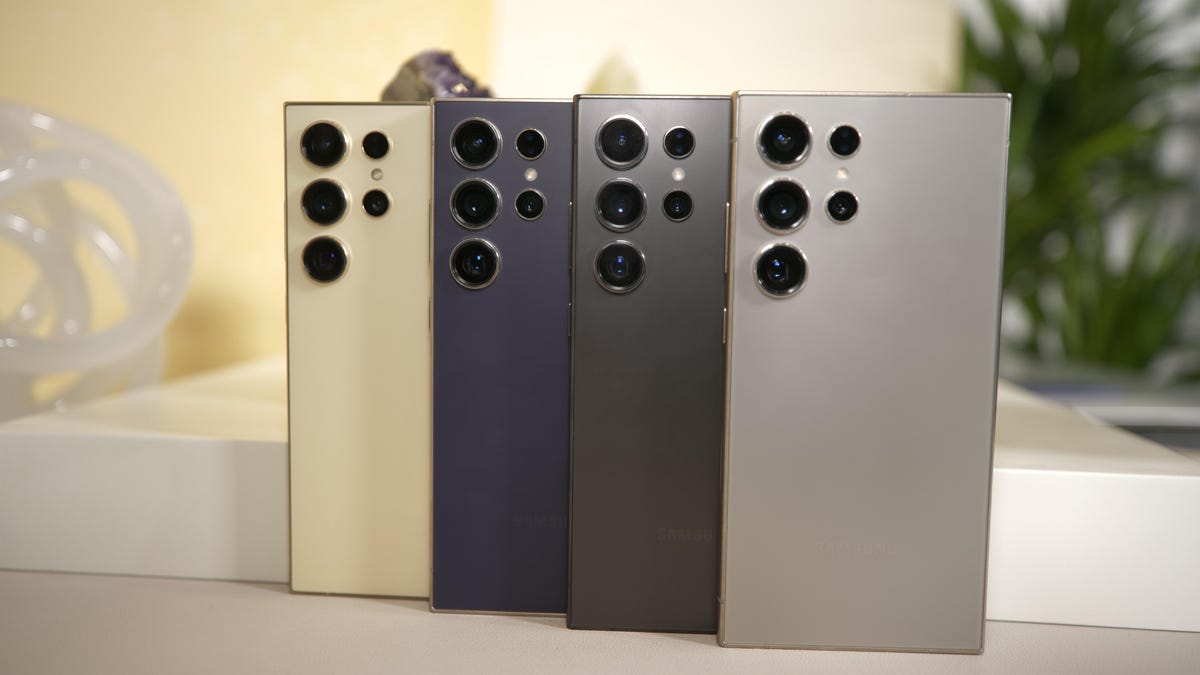
Samsung unveiled its newest Galaxy S24 phones at its Unpacked event. The most premium of the lot is the Galaxy S24 Ultra, which has several new features over last year’s model. What’s changed from the S23 Ultra, and should you upgrade? Probably not, but let me explain.
First, here’s what’s changed. The S24 Ultra has a nominal amount of upgrades on its predecessor (mainly under the hood), but is pricier, starting at $1,300, while the S23 Ultra had a $1,200 price tag at launch (and can probably be found for cheaper now).
Read more: Best Android Phone of 2024
The S24 Ultra visually looks identical to its predecessor, with broadly the same design and rear camera layout. There are subtle differences. For instance, Samsung’s new high-end phone has a titanium frame, which should be tougher than the aluminum frame on the S23 Ultra.
For the S24 Ultra, Samsung dispensed with the curved edges of the display found on the S23 Ultra, leaving a flat front (Samsung claims it has 47% less bezel on the sides). That new screen is also brighter with a maximum of 2,600 nits (the S23 Ultra maxed out at 1,750 nits) and thus easier to see in bright daylight. The S24 Ultra’s screen is also made of Corning’s newest and toughest material, Gorilla Glass Armor, while the S23 has Corning’s Gorilla Glass Victus 2.
In short: it looks the same but should be tougher and have a potentially brighter screen. The S24 Ultra also has an improved cooling system with a vapor chamber that’s twice as large and two added layers of thermal insulation, so we’d expect it to maintain better framerates and temperatures when running performance-intensive operations, like gaming.
As for cameras, the S24 Ultra inherits most of its predecessor’s lenses and sensors but does use a 50-megapixel 5x optical telephoto camera in place of the 10-megapixel 10x optical camera in the S23 Ultra. While the new camera has a shorter optical length, its higher megapixel count should mean photos taken with it are sharper than those shot with the S23’s 10x optical camera. (We’ll know for sure when we can compare both phones’ photo capabilities side by side.) To get to 10x optical length, the S24 Ultra shoots with its 5x optical camera and crop zooms in.
Read more: Samsung Galaxy S24 Phones Have a New Zoom Trick to Get That Close-Up Photo
The S24 Ultra is powered by a Snapdragon 8 Gen 3 chipset, which is faster than the Snapdragon 8 Gen 2 in the S23 Ultra. Configurations have also been simplified in the new premium phone: you can only get 12GB of RAM and 256GB, 512GB or 1TB of storage (no 8GB RAM option, as there was in the S23 Ultra). The rest of the hardware remains relatively unchanged, although the S24 Ultra should get a minor battery efficiency boost thanks to its newer chipset.

The big difference between the new phones, at least at the launch of the S24 Ultra, is the new phone’s generative AI capabilities, called Galaxy AI. The most noteworthy is Circle to Search, which lets you trace an area on your screen with your stylus or finger to have your phone look up what you’ve circled without ever having to leave the app you’re in. It’s conceivably great for looking things up, like identifying landmarks in the travel photos your friend sends over or trying to track down fashion items in someone’s outfit.
The S24 Ultra (and the rest of the S24 lineup, to be clear) has other generative AI capabilities, like summarizing notes and live translations during phone calls. It can also suggest different tones for text messages depending on who you’re talking to, recommending more formal tones for bosses or casual tones for friends. Generative AI photo tricks let users do things like move or delete some elements, expand photos beyond their original boundaries or correct the tilt of an image, then use AI to fill in the backgrounds and empty areas.
Some of these generative AI features can be processed locally, like live translation, while others require sending requests to the cloud. The S24 Ultra does have a toggle in its settings to require generative AI requests to be performed on the device, which helps keep what you’re asking (and what your phone is addressing) private.
The kicker? Galaxy AI is coming to some older Samsung phones, including the S23 series, at some point in the future. While Samsung hasn’t said when to expect them, these features should come to the S23 Ultra in time.
There are other non-generative AI upgrades the S24 Ultra has over its predecessor, like making photos more stable during movement and improving low-light photography. The S Pen accessory is more or less unchanged from last year.
There is one more upgrade that’s worth mentioning: Samsung expanded how long it’s pledging to support its newest phones. The S24 Ultra comes with Android 14 and will get seven years of Android software and security patches, up from four years in the S23 Ultra (which comes with Android 13). That’s big. For sustainability, the S24 Ultra has more recycled parts, including cobalt in its battery and rare earth elements in its speakers.
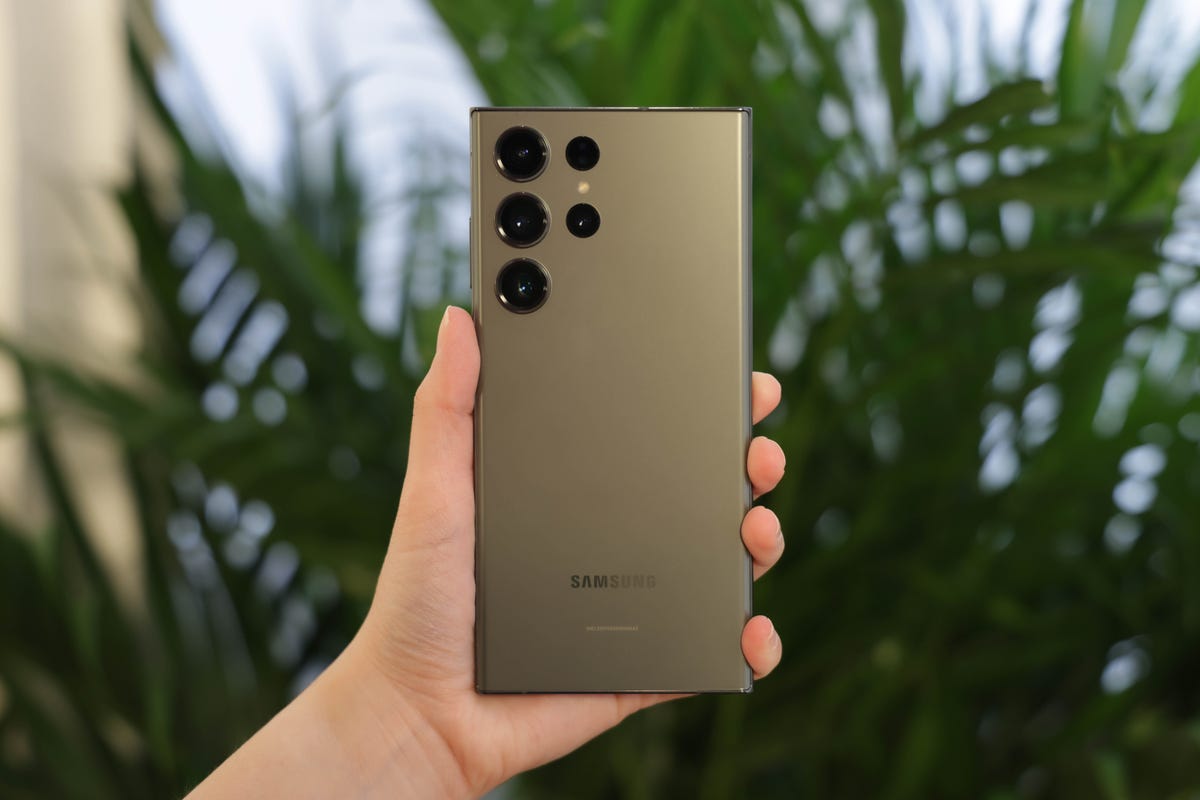
Should S23 Ultra owners upgrade to the new S24 Ultra?
You can count the hardware improvements on one hand and they don’t meaningfully change how owners use their new S24 Ultra compared to last year’s S23 Ultra. Ultimately, if you own Samsung’s premium phone from 2023, the only reason you to consider upgrading to the new one is to access generative AI today — or if you wanted a phone that could conceivably last you seven years.
As previously mentioned, all the Galaxy AI features are expected to come to the S23 Ultra at some point in the future. It’s unclear when that will happen, and though Samsung said all of the S24 Ultra’s generative AI features will come to its predecessor, we’re concerned whether last year’s premium phone can pull that off.
Last October, Qualcomm unveiled its Snapdragon 8 Gen 3 as the first phone-powering chipset to include generative AI on its silicon. That’s the chip powering the S24 Ultra, and presumably, the new phone needs that silicon to process some of its generative AI features. Either the S23 Ultra will require more of those Galaxy AI features to run through the cloud, or the Snapdragon 8 Gen 2 powering the S23 Ultra is actually capable of running on-device generative AI, but those features weren’t ready when that chipset launched in late 2022.
Whatever the case, whether you want generative AI weighs more heavily than any other factor on whether it’s worth upgrading from the S23 Ultra to the new S24 Ultra. It’s worth noting that we haven’t gotten to thoroughly experience Galaxy AI ourselves, and can’t make a summary judgment of its usefulness until we do. Once our full review comes out, we’ll be better informed to say whether the S24 Ultra provides a superior experience to its predecessor. For now, we recommend waiting — unless you want to be on the absolute cutting edge of mobile technology.
Samsung Galaxy S24 Ultra specs vs. Samsung Galaxy S23 Ultra
| Samsung Galaxy S24 Ultra | Samsung Galaxy S23 Ultra | |
| Display size, tech, resolution, refresh rate | 6.8-inch AMOLED; 3,120×1,440 pixels; 1-120Hz adaptive refresh rate | 6.8-inch AMOLED; 3,088×1,440 pixels; 120Hz adaptive refresh rate |
| Pixel density | 501 ppi | 500 ppi |
| Dimensions (inches) | 6.40 x 3.11 x 0.34 in | 6.43 x 3.07 x 0.35 in |
| Dimensions (millimeters) | 163 x 79 x 8.6 mm | 163.3 x 78 x 8.9 mm |
| Weight (grams, ounces) | 233 g (8.22 oz) | 234 g (8.25 oz) |
| Mobile software | Android 14 | Android 13 |
| Camera | 200-megapixel (wide), 12-megapixel (ultrawide), 10-megapixel (3x telephoto), 50-megapixel (5x telephoto) | 200-megapixel (wide), 12-megapixel (ultrawide) 10-megapixel (3x telephoto) 10-megapixel (10x telephoto) |
| Front-facing camera | 12-megapixel | 12-megapixel |
| Video capture | 8K | 8K |
| Processor | Qualcomm Snapdragon 8 Gen 3 | Qualcomm Snapdragon 8 Gen 2 for Galaxy |
| RAM/storage | 12GB RAM + 256GB, 512GB, 1TB | 8GB RAM + 256GB; 12GB RAM + 256GB, 512GB, 1TB |
| Expandable storage | None | None |
| Battery | 5,000 mAh | 5,000 mAh |
| Fingerprint sensor | Under display | Under display |
| Connector | USB-C | USB-C |
| Headphone jack | None | None |
| Special features | Titanium frame, 2,600-nit peak brightness; 7 years of OS and security updates; 5G (mmWave); IP68 water resistance; wireless PowerShare to charge other devices; integrated S Pen; UWB for finding other devices; 45W wired charging (charger not included); Galaxy AI; Wi-Fi 7; Gorilla Glass Armor cover glass | 4 years of OS updates, 5G (Sub6, mmWave); IP68 water resistance; wireless PowerShare to charge other devices; integrated S Pen; 100x Space Zoom; 10x optical zoom; UWB for finding other devices; 45W wired charging |
| US price starts at | $1,300 (256GB) | $1,200 (256GB) |
| UK price starts at | £1,249 (256GB) | £1,249 (256GB) |
| Australia price starts at | AU$2,199 (256GB) | AU$1,949 (256GB) |
Editors’ note: CNET is using an AI engine to help create some stories. For more, see this post.
Technologies
Today’s NYT Strands Hints, Answers and Help for Nov. 28 #635
Here are hints and answers for the NYT Strands puzzle for Nov. 28, No. 635.
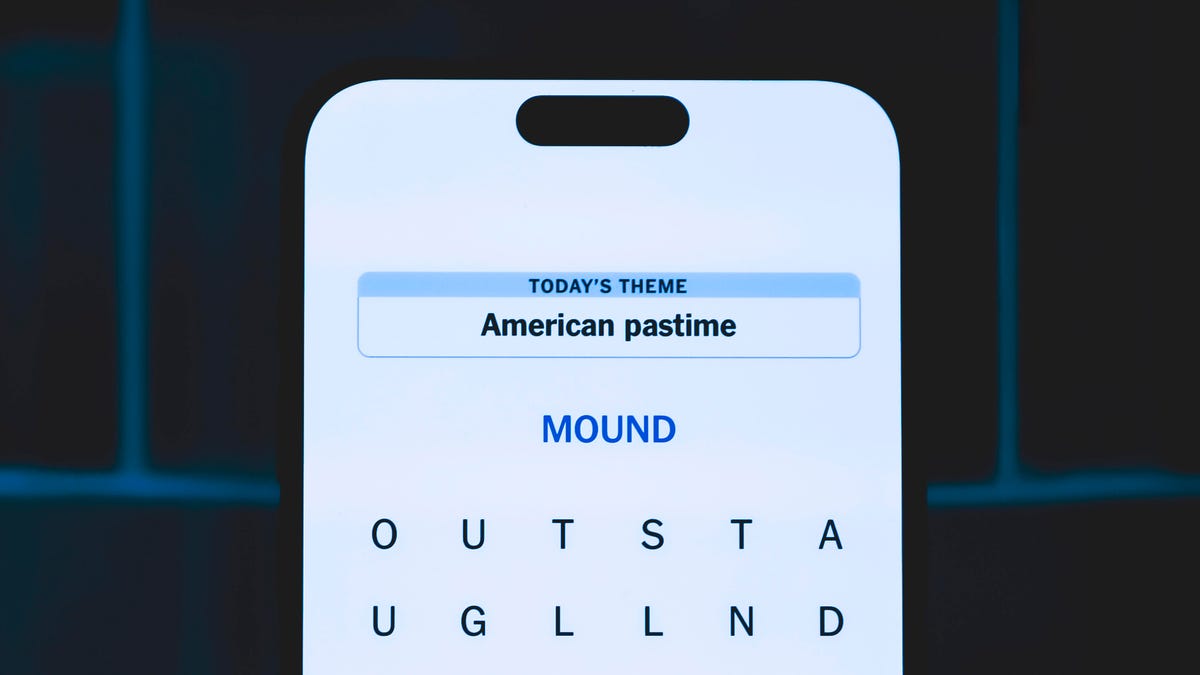
Looking for the most recent Strands answer? Click here for our daily Strands hints, as well as our daily answers and hints for The New York Times Mini Crossword, Wordle, Connections and Connections: Sports Edition puzzles.
Today’s NYT Strands puzzle is pretty tricky. If you’re not familiar with certain superstitious beliefs, you might not find all the answers. And some of the answers are difficult to unscramble, so if you need hints and answers, read on.
I go into depth about the rules for Strands in this story.
If you’re looking for today’s Wordle, Connections and Mini Crossword answers, you can visit CNET’s NYT puzzle hints page.
Read more: NYT Connections Turns 1: These Are the 5 Toughest Puzzles So Far
Hint for today’s Strands puzzle
Today’s Strands theme is: If all else fails…
If that doesn’t help you, here’s a clue: Don’t tell, it won’t come true.
Clue words to unlock in-game hints
Your goal is to find hidden words that fit the puzzle’s theme. If you’re stuck, find any words you can. Every time you find three words of four letters or more, Strands will reveal one of the theme words. These are the words I used to get those hints but any words of four or more letters that you find will work:
- GLUB, RATS, TARN, DALE, FONT, FOUNT, LASH
Answers for today’s Strands puzzle
These are the answers that tie into the theme. The goal of the puzzle is to find them all, including the spangram, a theme word that reaches from one side of the puzzle to the other. When you have all of them (I originally thought there were always eight but learned that the number can vary), every letter on the board will be used. Here are the nonspangram answers:
- DANDELION, STAR, COIN, FOUNTAIN, LADYBUG, EYELASH
Today’s Strands spangram
Today’s Strands spangram is MAKEAWISH. To find it, start with the M that’s three letters down on the far right, and wind backwards.
Technologies
Today’s NYT Connections Hints, Answers and Help for Nov. 28, #901
Here are some hints and the answers for the NYT Connections puzzle for Nov. 28, #901.
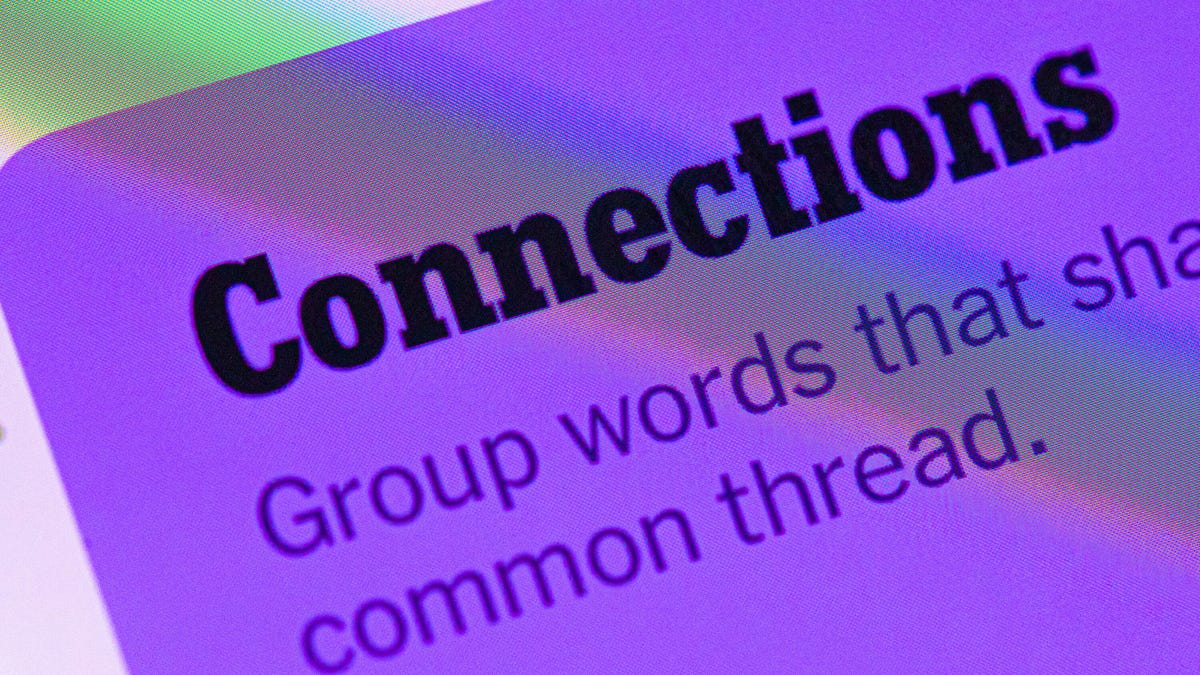
Looking for the most recent Connections answers? Click here for today’s Connections hints, as well as our daily answers and hints for The New York Times Mini Crossword, Wordle, Connections: Sports Edition and Strands puzzles.
Today’s NYT Connections puzzle is kind of tough. If you need help sorting the answers into groups, you’re in the right place. Read on for clues and today’s Connections answers.
The Times now has a Connections Bot, like the one for Wordle. Go there after you play to receive a numeric score and to have the program analyze your answers. Players who are registered with the Times Games section can now nerd out by following their progress, including the number of puzzles completed, win rate, number of times they nabbed a perfect score and their win streak.
Read more: Hints, Tips and Strategies to Help You Win at NYT Connections Every Time
Hints for today’s Connections groups
Here are four hints for the groupings in today’s Connections puzzle, ranked from the easiest yellow group to the tough (and sometimes bizarre) purple group.
Yellow group hint: Appropriate.
Green group hint: I win!
Blue group hint: Musical instrument.
Purple group hint: Time to talk.
Answers for today’s Connections groups
Yellow group: Fitting.
Green group: Achieve victory over.
Blue group: Parts of an electric guitar.
Purple group: Phonetic elements of speech.
Read more: Wordle Cheat Sheet: Here Are the Most Popular Letters Used in English Words
What are today’s Connections answers?
The yellow words in today’s Connections
The theme is fitting. The four answers are fair, just, proper and right.
The green words in today’s Connections
The theme is achieve victory over. The four answers are beat, best, take and worst.
The blue words in today’s Connections
The theme is parts of an electric guitar. The four answers are fret, peg, pickup and string.
The purple words in today’s Connections
The theme is phonetic elements of speech. The four answers are intonation, loudness, rhythm and stress.
Technologies
Anker’s New MagSafe Car Mount Keeps Your Phone Cool While Charging, and It’s 30% Off for Black Friday
Get wired-like charging speeds and MagSafe compatibility with Anker’s wireless car charging bundle for $62.99.
Black Friday is the best time of the year to upgrade the little essentials that make your everyday tech life more pleasant. I’ve found the perfect deal to amp up the phone charging setup in your car. This Anker MagSafe wireless car charging bundle is 30% off for the holidays, and it gives your iPhone a fast and steady way to power up while you navigate. It delivers up to 25-watt wireless charging speeds and with onboard active cooling, your phone stays comfortable to the touch.
Get it now for $62.99 verses the list price of $89.99.
What sets this charger apart is that its performance and cooling tech is built into a surprisingly compact package. The stand uses an ultra-strong Qi2 magnetic lock to keep your phone secure through bumps and turns. You can even tilt the mount and switch between portrait and landscape modes for navigation without blocking the view. The bundle has everything you need to get started including a 60-watt dual-USB-C charger, an adequately long USB-C cable, and cable organizers for a clean setup. Anker also includes a two-year warranty for peace of mind.
If you are getting your car prepped up for driving to a holiday vacation or just need a faster charging mount for your daily commute, this deal makes a lot of sense. CNET’s experts are also tracking more Black Friday and Cyber Monday picks across Apple products, headphones, and more, so you can score more savings before the sales season wraps up.
MOBILE DEALS OF THE WEEK
-
$749 (save $250)
-
$475 (save $175)
-
$499 (save $300)
-
$900 (save $400)
Why this deal matters
A high quality charger is a great addition to any car to speedily top up your phone on the go. You will especially want to look out for options from a top-tier brand like Anker for its fast charging speeds and reliability. This Black Friday deal is an excellent opportunity to save big on a staple car accessory. With holiday shopping heating up and tech accessories being one of the most popular categories, we expect the deal to sell out quick. So don’t wait too long before jumping on it.
Don’t miss any of our unbiased tech content and lab-based reviews. Add CNET as a preferred Google source.
Join Our Daily Deals Text Group!
Get hand-picked deals from CNET shopping experts straight to your phone.
By signing up, you confirm you are 16+ and agree to receive recurring marketing messages at the phone number provided. Consent is not a condition of purchase. Reply STOP to unsubscribe. Msg & data rates may apply. View our Privacy Policy and Terms of Use.
-

 Technologies3 года ago
Technologies3 года agoTech Companies Need to Be Held Accountable for Security, Experts Say
-

 Technologies3 года ago
Technologies3 года agoBest Handheld Game Console in 2023
-

 Technologies3 года ago
Technologies3 года agoTighten Up Your VR Game With the Best Head Straps for Quest 2
-

 Technologies4 года ago
Technologies4 года agoBlack Friday 2021: The best deals on TVs, headphones, kitchenware, and more
-

 Technologies4 года ago
Technologies4 года agoVerum, Wickr and Threema: next generation secured messengers
-

 Technologies4 года ago
Technologies4 года agoGoogle to require vaccinations as Silicon Valley rethinks return-to-office policies
-

 Technologies4 года ago
Technologies4 года agoOlivia Harlan Dekker for Verum Messenger
-

 Technologies4 года ago
Technologies4 года agoiPhone 13 event: How to watch Apple’s big announcement tomorrow

